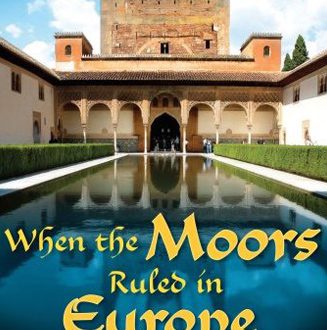 A skull and gold-inlaid brooch ‘on a par with the Sutton Hoo burial‘, found by an amateur metal detecting enthusiast, could prove to belong to a 1,500 year-old Saxon princess, experts are claiming. The incredible haul came to light when Chris Bayston, 56, noticed something during a rally with the Weekend Wanderers Metal Detectors Club on farmland near West Hanney, Oxfordshire. On further inspection Mr Bayston found the skull and copper alloy brooch; circular in shape, covered in gold and studded with garnets and coral. “I lifted a shovel load of muck out and as I threw it down I saw the brooch,” he tells the Oxford Mail. “I poked a hole open and saw the bones, and thats when I thought, Christ, I better stop: Ive hit a serious find. I cannot get my head around it yet. Its a dream come true really, just unbelievable. They may be able to learn a lot from this.”
A skull and gold-inlaid brooch ‘on a par with the Sutton Hoo burial‘, found by an amateur metal detecting enthusiast, could prove to belong to a 1,500 year-old Saxon princess, experts are claiming. The incredible haul came to light when Chris Bayston, 56, noticed something during a rally with the Weekend Wanderers Metal Detectors Club on farmland near West Hanney, Oxfordshire. On further inspection Mr Bayston found the skull and copper alloy brooch; circular in shape, covered in gold and studded with garnets and coral. “I lifted a shovel load of muck out and as I threw it down I saw the brooch,” he tells the Oxford Mail. “I poked a hole open and saw the bones, and thats when I thought, Christ, I better stop: Ive hit a serious find. I cannot get my head around it yet. Its a dream come true really, just unbelievable. They may be able to learn a lot from this.”
The club subsequently notified local polic to protect the site. The Home Office has commissioned professional archaeologists to begin exhuming the rest of the body, and to look for any more treasure which may have come loose over the years. A date has not yet been set for completion. The quality of the brooch has led many to deduce its owner was someone of significant status.
The club’s chief, Peter Welch, hails the find as the biggest he’s observed in over 20 years. “It could be a Saxon princess or queen, but we will need more excavation to find out,” he says. “The brooch shows some very skilful workmanship, on a par with the Sutton Hoo burial.” Sutton Hoo became Britain’s most famous Saxon haul in 1939, when Basil Brown unearthed the incredible remains of a ship, alongside several precious items including the now-iconic helmet, which now reside in the British Museum.
Oxfordshire County Council finds liaison officer Anni Byard recognises the importance of the discovery. “It’s an important find with the burial still intact,” she claims. “Finds like this don’t come along very often.”
Mr Welch adds to the BBC: “To get this grave intact was quite important and we’re now waiting for a licence so the grave can be properly excavated. Potentially there are other pieces with the grave that have yet to excavated. This part of Oxfordshire was previously unknown and unlisted as a Saxon occupation sight, but now it’s on the map.”



